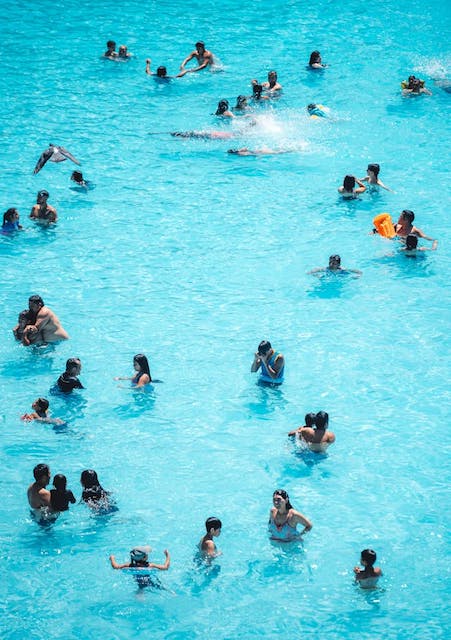How to be Water Safe at Home
Did you know that May is recognized as National Water Safety Month, to raise awareness and promote the importance of water safety? While safety is our #1 priority every single day, here at Big Blue Swim School, we want to ensure as many families as possible understand how to be safer around water, whether you’re at the water park, beach, or your own backyard pool.
After all, drowning is sadly one of the leading causes of death for children under the age of 14, according to the Centers for Disease Control and Prevention ([CDC], 2024). To prevent drowning and help families follow some simple safety measures, we observe the SAFER acronym:
S – swim with a buddy and designate a Water Watcher. Never swim alone and if children are in the water, identify an adult who will keep a close eye on swimmers, free of distractions, even if there is a lifeguard nearby. To avoid supervision fatigue, rotate the Water Watcher every 30 minutes.
A – Acquire CPR and first aid training. Parents and caregivers should take CPR and first aid training through a reputable organization, such as the American Red Cross or American Heart Association, so you can be better prepared in case an accident ever occurs. You can often find these classes at local education centers.
F – Find and reduce water hazards. At home, install fencing, locks, and alarms around your pool. Additionally, don’t leave toys or other items of interest to your children near the water.
E – Enroll in swim lessons. The CDC (2022) mentions that, “formal swimming lessons can reduce the risk of drowning.” By signing your children up for year-round formal swim lessons, they are significantly more likely to be prepared around water as they learn one of the most necessary life-saving skills.
R – Respond fast and call 911 for emergencies. Always verify that the Water Watcher can respond quickly to an emergency and dial 911.

What to do If an Emergency does Occur
Remember, drowning is often silent. Dramatized TV shows and movies sometimes display drowning as a highly visible struggle, where the swimmer is waving, splashing, and crying for help. In reality, drowning is deceptively quiet. People, including children, usually cannot call for help because their respiratory system is too busy trying to breathe. They cannot wave their arms for attention, since the body’s instinct is to push down on the water as they attempt to come up for air.
It is crucial to know the silent signs of drowning. The American Red Cross (n.d.) describes that a swimmer may be drowning in the water if they are not making forward progress, they are vertical but unable to move or tread, or they are motionless and face down. If you notice someone might be drowning, alert a lifeguard right away, if one is present. Without putting yourself at risk, immediately rescue the person. If another person is there, have them call 911, while you remove the swimmer from the water and administer CPR or first aid.
Additional Tips
- Teach your child to never go around or in bodies of water, even at home, like a pool, lake, or pond, without adult supervision.
- Stay as close to your child as possible when you are around water, including bathtubs. Small children can drown in as little as two inches of water.
- When participating in water activities, from swimming to boating, ensure everyone is wearing U.S. Coast Guard approved life jackets.
- Do not substitute pool floats for parental supervision.
We understand that many parents share a fear of their child experiencing a water emergency, and we hope that never happens. That’s why we are so passionate about being water SAFER and teaching valuable swimming skills to children as young as three months. If your child is not enrolled in lessons yet, we encourage you to do so at a swim school near you. We hope to see your family soon, allowing your child to feel comfortable, confident, and – more than anything – SAFE for wherever their journey takes them!

Resources
American Red Cross. (n.d.) Water Safety. https://www.redcross.org/get-help/how-to-prepare-for-emergencies/types-of-emergencies/water-safety.html
Centers for Disease Control and Prevention. (2024, January 2). Drowning Facts. https://www.cdc.gov/drowning/facts/index.html
Centers for Disease Control and Prevention. (2022, October 7). Drowning Prevention. https://www.cdc.gov/drowning/prevention/index.html